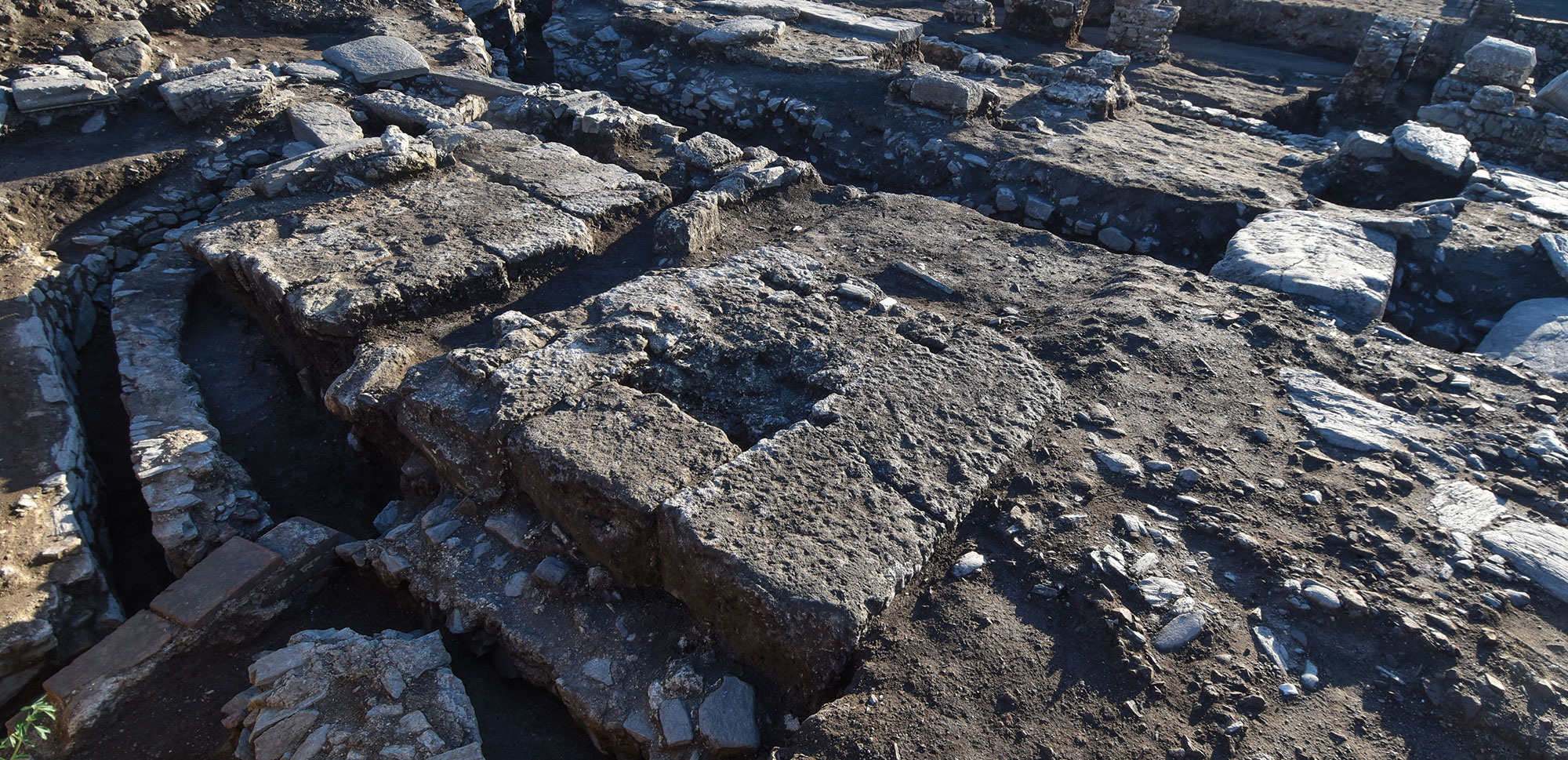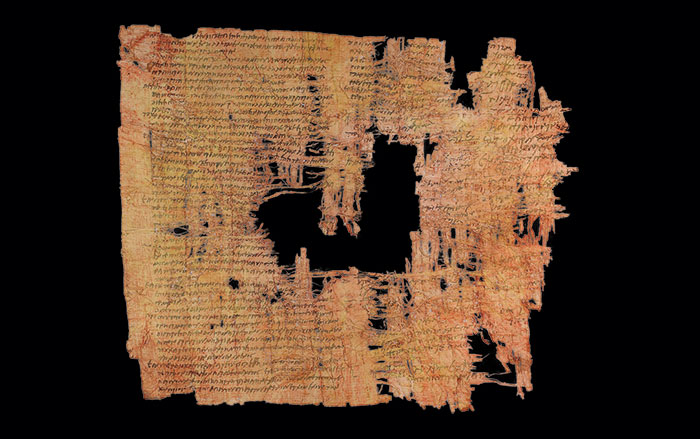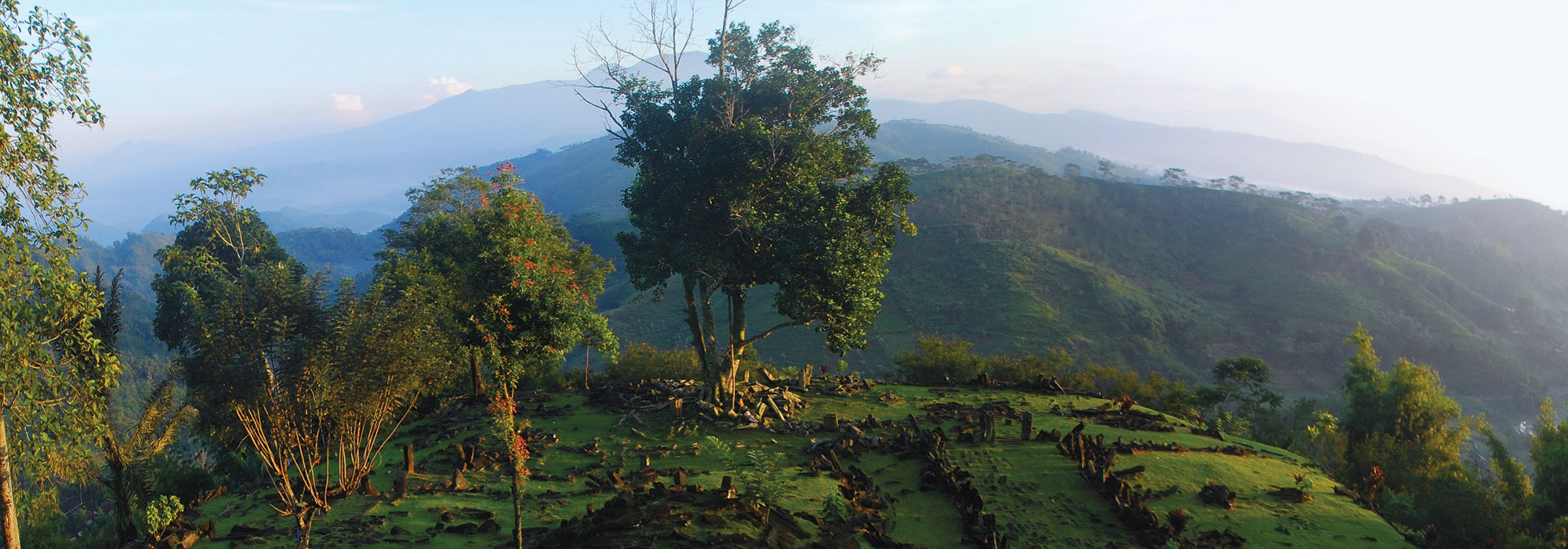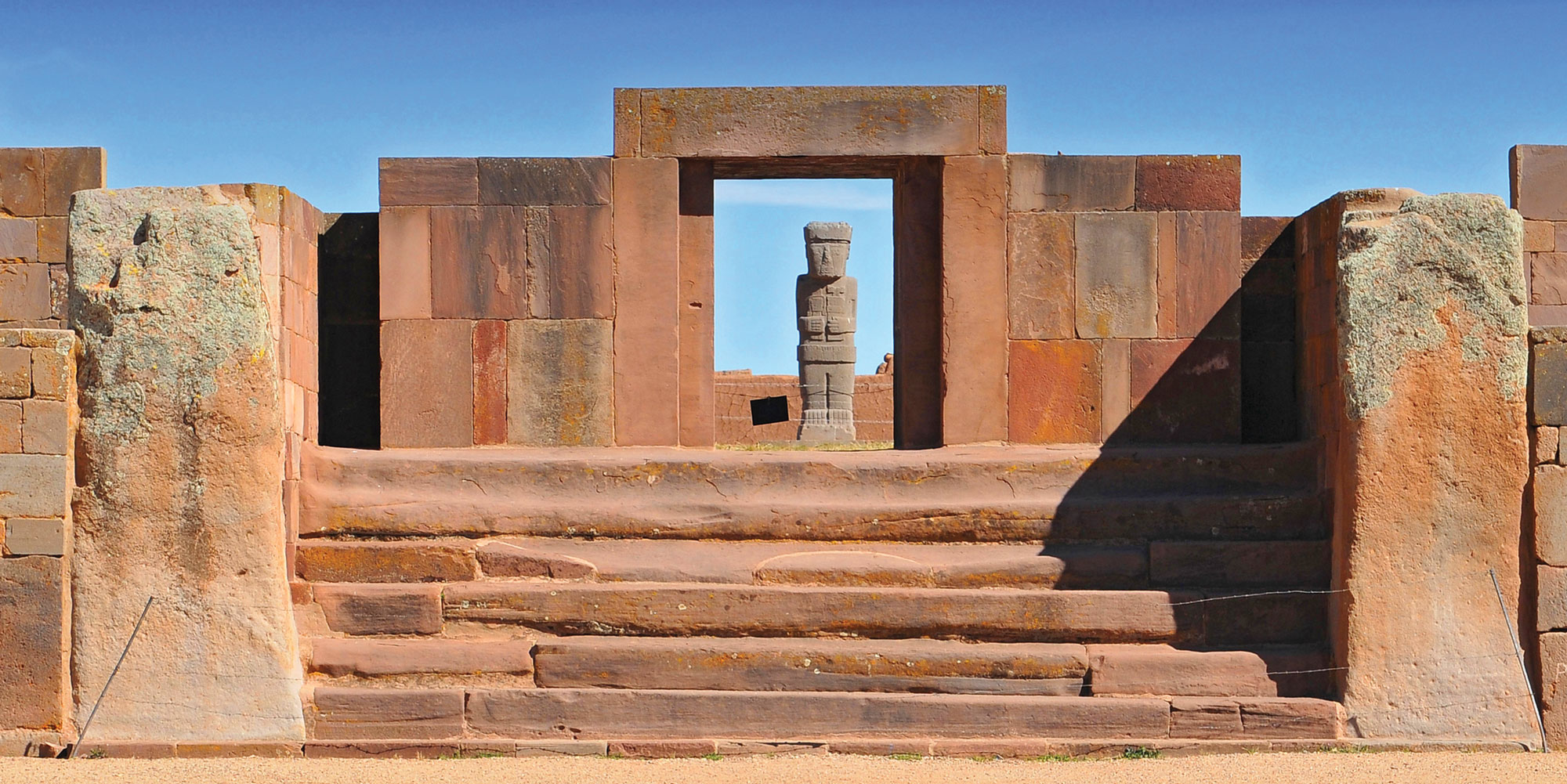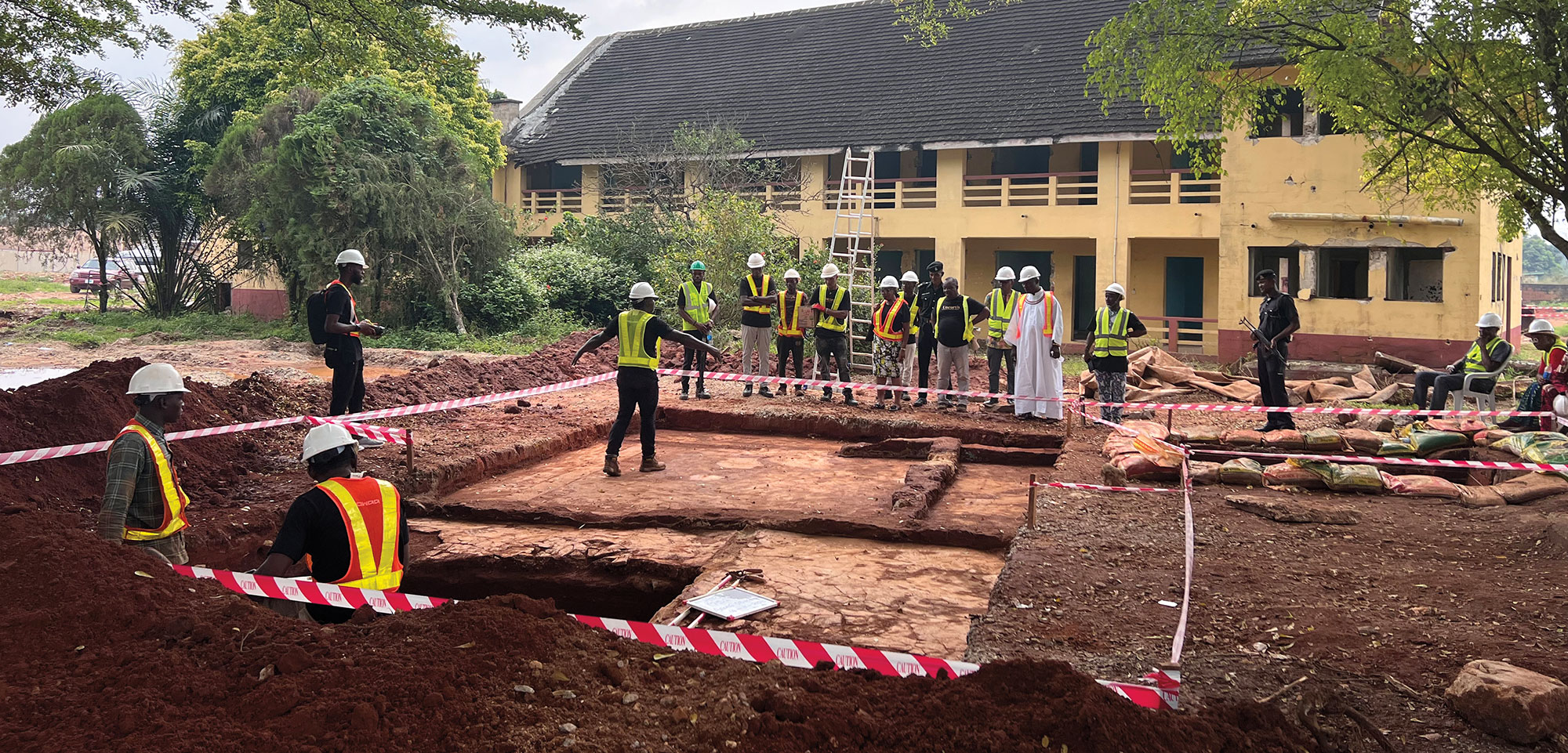Archaeologists unearthed foundations (in box, above right) of a late second- or early third-century A.D. arch in the Roman city of Viminacium in Serbia. A drawing (above) shows a reconstruction of the arch including an inscription fragment found nearby.
In the early second century A.D., with the Roman emperor Trajan’s conquests of Dacia, in what is now Romania, and Parthia, in modern Iran, the Roman Empire reached its greatest extent. Trajan was born in Spain, the first emperor to have been


